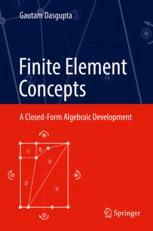

Most ebook files are in PDF format, so you can easily read them using various software such as Foxit Reader or directly on the Google Chrome browser.
Some ebook files are released by publishers in other formats such as .awz, .mobi, .epub, .fb2, etc. You may need to install specific software to read these formats on mobile/PC, such as Calibre.
Please read the tutorial at this link: https://ebookbell.com/faq
We offer FREE conversion to the popular formats you request; however, this may take some time. Therefore, right after payment, please email us, and we will try to provide the service as quickly as possible.
For some exceptional file formats or broken links (if any), please refrain from opening any disputes. Instead, email us first, and we will try to assist within a maximum of 6 hours.
EbookBell Team

0.0
0 reviewsThis text presents a highly original treatment of the fundamentals of FEM, developed using computer algebra, based on undergraduate-level engineering mathematics and the mechanics of solids. The book is divided into two distinct parts of nine chapters and seven appendices. The first chapter reviews the energy concepts in structural mechanics with bar problems, which is continued in the next chapter for truss analysis using Mathematica programs. The Courant and Clough triangular elements for scalar potentials and linear elasticity are covered in chapters three and four, followed by four-node elements. Chapters five and six describe Taig’s isoparametric interpolants and Iron’s patch test. Rayleigh vector modes, which satisfy point-wise equilibrium, are elaborated on in chapter seven along with successful patch tests in the physical (x,y) Cartesian frame. Chapter eight explains point-wise incompressibility and employs (Moore-Penrose) inversion of rectangular matrices. The final chapter analyzes patch-tests in all directions and introduces five-node elements for linear stresses. Curved boundaries and higher order stresses are addressed in closed algebraic form. Appendices give a short introduction to Mathematica, followed by truss analysis using symbolic codes that could be used in all FEM problems to assemble element matrices and solve for all unknowns. All Mathematica codes for theoretical formulations and graphics are included with extensive numerical examples.